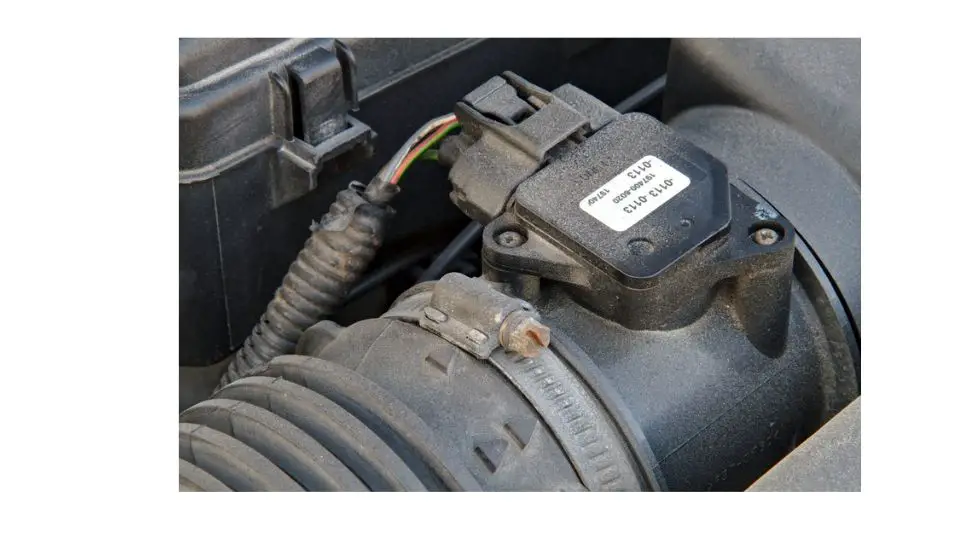What is a normal mass air flow sensor reading? If you’re wondering about this, you are not alone. Most drivers don’t even know where to look for this sensor, let alone what its normal readings should be. This article will teach you everything you need to know about mass airflow sensor reading. Read on.
What is MAF?
The mass air flow (MAF) sensor, part of your vehicle’s electronic fuel injection system, determines the mass flowrate of air entering the engine.
The MAF sensor then sends this information to the engine computer (PCM). Based on this data, the PCM adjusts the air/fuel ratio for optimum combustion. The MAF sensor measures air density.
The greater the density of air that enters an engine, the more oxygen is available for combustion. Since power is a factor of torque multiplied by engine speed, an increase in torque at any given rpm results in increased horsepower.
What is the Main Purpose of Air Low Meter Sensor?
The main purpose of an air flow meter is to measure the volume of air entering an engine. This measurement is then used to calculate the amount of fuel needed for combustion.
An airflow meter is a device that measures the volume and density of air flowing into an internal combustion engine. The airflow meter is mounted in the engine air intake system between the air filter and the throttle body or carburetor.
An airflow meter can be mounted inside or outside of the engine’s intake tract, depending on the type of sensor used.it, which in turn lets the ECU calculate how much fuel to inject into the engine.
What is a Normal Mass Airflow Sensor Reading?
A normal mass air flow sensor reading will vary between 2 to 7 grams/second and between 15 to 25 grams/s at 2500rpm. In conjunction with the air temperature sensor, the MAF sensor determines the density of the air entering the engine. The ECU uses this information to calculate how much fuel is needed to make a stoichiometric mixture for combustion.
What Do Air flow Meter Readings Mean?
The airflow meter measures the amount of air that flows into the engine. It tells the ECU how much fuel to inject and when to ignite it. If the sensor is defective, your car may not start, or it may run poorly.
If a problem is suspected, you can use an automotive scan tool to monitor the output of the air flow sensor in real-time.
There are two types of airflow meters: mass airflow sensors and vane airflow meters. Mass airflow sensors measure the amount of air passing through the intake system, while vane airflow meters measure the speed at which air flows past a sensor.
The readings will vary depending on which type of meter you have installed and what parameters you’re monitoring, but they all follow one basic rule: More air means more fuel.
What will happen if you unplug the mass airflow sensor?
If you remove the mass airflow sensor, the car should continue to run and start normally. However, it will almost certainly run very badly as the engine will not be getting enough air to operate.
You should also note that most cars built since the 1990s have a fuel injection system with an electronic control unit (ECU). This is a computer that manages all of the various systems in the car including the fuel supply, ignition timing and so on.
How do I reset my mass airflow sensor?
Sometimes a faulty mass airflow sensor can cause your engine to not start at all. If you’ve tried everything else, it might be time to try resetting the ECU. Most vehicles have a battery that can be unhooked for several minutes (10 is usually sufficient) and then hooked back up. This will reset the ECU and clear any trouble codes stored in it.
Conclusion
Well, hopefully that gave you a better understanding of air flow sensors, as well as how they work and how to troubleshoot them.

Robert Anderson is a world class motorhead who rebuilt his first carb at age 10, his first engine at age 15, and completed his first full hotrod build when he was just 18! Previously, he has ran a part warehouse, delivered pizzas, and managed the service department for a $20 million/year revenue dealership. Robert knows cars like few others and he is passionate about sharing his knowledge.

